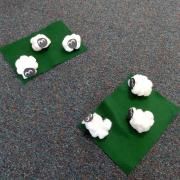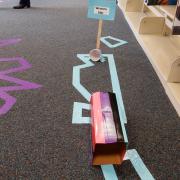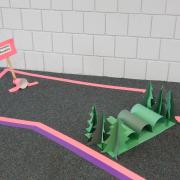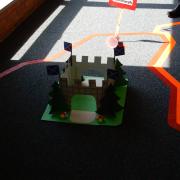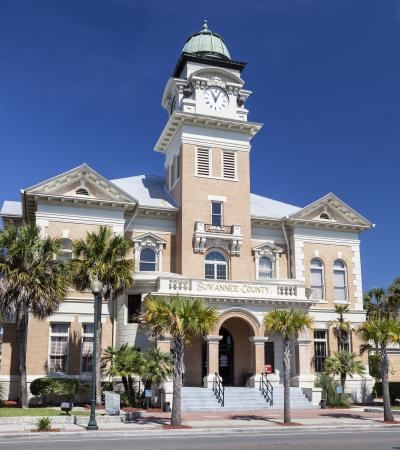Advanced Planning
This program was developed to help people learn more about the heritage of the Cumberland County, N.C., area, founded by the Scots in the 1700s. The festival was held on March 12, 2016, and we started planning in November/December 2015. A five-person committee was formed, consisting of members from CCPL & IC’s Local & State History, Programming, Information Services, and Youth Services departments. We met several times in advance to brainstorm, plan games/crafts and delegate duties.
After researching the history, we contacted suitable presenters, community organizations and others to participate in the fair. We also scheduled lectures and set up displays in the library.
This being the first time for this event, we encountered the unexpected challenge of predicting participant turnout for the festival’s programs. We also had some difficulty with communication between the departments while planning the festival’s activities.
Marketing
One of the members of the staff committee is a marketing staff member, so she was involved in every step of the planning process. We sent out a press release, posted to Facebook and to our library calendar, and displayed posters to market the event. (View an event poster under Attachments at right.)
We also wrote a news article to help promote the festival, but the local newspaper nixed our version of the article and replaced it with a feature article of their own! Based on attendance and interest prior to the event, we were more successful than we thought we would be.
Budgeting
We spent very little on this program, using many items that we already had in craft kits or had donated/loaned by community organizations. What we did spend came out of our normal programming budgets and was spent on a couple of items for the games and food for the volunteers.
If I had to cut the budget further, I would do the food as a potluck since it was for the volunteers.
Day-of-event Activity
We started set-up the day before the event by moving furniture, setting up chairs in lecture areas and tables in information/organizations' areas, and setting up the games and putt-putt course.
The day of the festival, we furnished the lecture area set-up with the necessary A/V, prepared the game and craft area, decorated the information area with tartan flags, and assisted presenters and organizations with their needs. We had 14 staff members and volunteers throughout the day to assist with set-up, event activities and tear-down.
Given the size of the event and assigned staffing, the challenge was addressing unexpected physical room changes to meet the needs of the presenters with available resources in an efficient and timely manner. One unexpected challenge was needing a podium for our first presenter. When he arrived, we discovered that he is blind and would need a flat surface at waist height to place the notes, in Braille, for his presentation. We were able to move a podium from another presentation space to accommodate the speaker. Next year we are planning to have extra staff as "floaters" and have larger, heavier items, such as podiums, added to the advanced room set-ups.
Other challenges involved how best to announce when event sessions would be starting, and conducting a pool noodle caber toss indoors.
Program Execution
We had two lecture areas with concurrent programs, a kids' game area with Highland games and crafts, and a vendor area featuring community organizations with information to share.
The lectures offered a broad look at the history of the Scots from before they immigrated to America, to how they still impact our community today. (View a flier listing all the day's speakers under Attachments at right.) The kids' area included the following activities and crafts:
- Putt-Putt Around Scotland: Golf is very popular in Scotland and putt-putt, or miniature golf, was invented by a North Carolinian. We created four "holes" for the children on a map of Scotland. (View photos of the putt-putt golf course under Photo Slideshow at right.)
- Highland Steps: Historically this would have been practiced by warriors jumping/dancing over swords on the ground. Today we put "bumpers" on the ground for the children to jump over in a number square.
- Caber Toss: This is done with very large and heavy logs at Highland games. For the children, we used pool noodles.
- Sheaf Toss: This is usually done with large shovels and bags of grain. For the children, we used a garden shovel and bean bags.
- Crafts/Sewing: For both of the projects below, we pre-cut the patterns in felt and had yarn needles, thread and other notions for the children to sew them together.
- Scottie Dogs: This was very popular with the children as they love the Scottish Terrier.
- Sporran: This is the bag worn on the front of a kilt by men. We used felt (instead of the foam listed in the linked instructions) and it worked great.
Approximately 300 people attended the event and all of the feedback was excellent, with many people wanting to know when next year’s event will be. The only detractor was that we did not have a bagpiper. We definitely achieved our goals of sharing the area’s heritage and providing a fun atmosphere in which to enjoy that heritage.
Advice
I think this type of program could work with any culture and works best when you can relate it to the community you are in, as we did with the history of how this community developed and was impacted by the Scots. If at all possible, make sure you have live music or some other form of live entertainment appropriate to the culture you are celebrating, as people will be expecting it.
Supporting Materials
- Feedback (Coming Soon!)
- Programming Librarian Facebook Group

